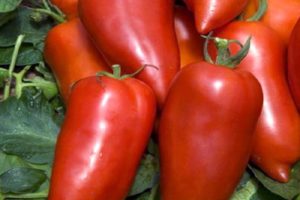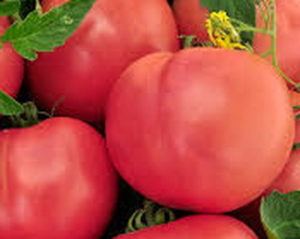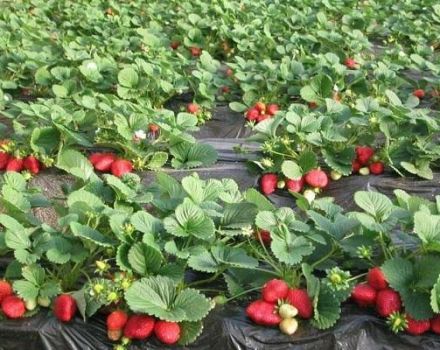Characteristics and description of the orange giant tomato variety, its yield
Consider a variety of fleshy, sweet tomato Orange giant tomato. We evaluate its pros and cons. The giant has long been popular; it was entered into the State Register back in 2001. Since then, summer residents have successfully grown it in the south in the open field, in a temperate climate - in greenhouses.
Main characteristics
The variety is indeterminate. Standard bushes, relatively low, in the ground - 70 cm, rather high in the greenhouse - 1.5 m. The characteristic of the rate of fruit ripening is a medium early plant. Ripe tomatoes should be expected 110 days after the seedlings emerge.
The description of the variety contains recommendations for the choice of soil, for good results it should be:
- easy;
- fertile;
- well permeable to air and water.
Fruit
The photo shows the original shape of the tomato - flattened-rounded. The pulp of the fruit is bright orange, yellow in low light. The more sun the bushes receive, the brighter the tomato color.
The weight and size of the fruit depends on the way the bush is formed and the quality of care. On depleted soils without top dressing and the formation of a bush, it will hardly be possible to get large fruits.
With good agricultural technology of forming a bush in 1 stem, following the planting scheme of 4 roots / m², the fruits can reach a weight of 800 g. In general, the average weight of tomatoes is 250-350 g.

The pulp is fragrant, incredibly sweet and juicy. Its excellent taste is the main value of the variety. The purpose of the fruits is salad. Productivity cannot be called high. From one bush over the summer, you can remove 6 kg of large, orange tomatoes.
Valuable qualities of the variety
Let's note the properties that determine the value of the Orange Giant:
- Large fruit size.
- Sweet taste.
- The harvest does not depend on the weather.
- You can use your seeds for propagation.
One drawback can be noted - large fruits can be obtained with regular feeding. In their absence, the yield can be average in terms of the number of fruits and their size.
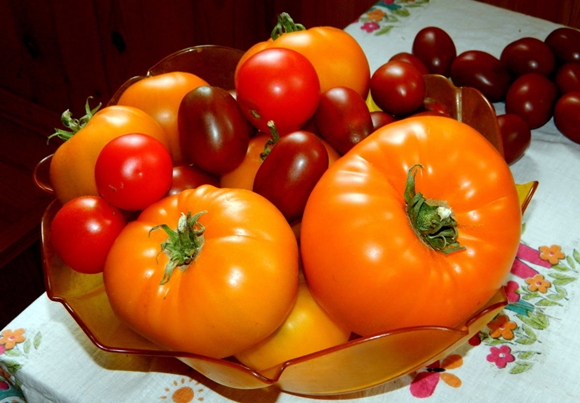
Diseases and pests, the fight against them
Tomatoes growing in a greenhouse rarely get sick with proper care. Poor maintenance, excessive watering, drafts, high humidity are the reasons why the Orange Giant can get sick with late blight or other fungal disease.
In the south, tomato plantings in open ground are threatened by:
- Colorado beetle;
- melon aphid;
- sawfly;
- moth;
- thrips.
In stores, there is a large selection of drugs to combat these insects:
- Prestige.
- Bison.
- Lepidocide.
Prevention
Prevention of late blight is the best method of dealing with it.When growing tomatoes in greenhouse conditions, there are more prerequisites for the reproduction of fungal spores. Any summer resident with a greenhouse must treat the greenhouse in the fall or spring in one of the following ways:
- At the end of the season, remove all plant residues (roots, stems, leaves), mating. Clean the stakes and spray them with copper sulfate or any fungicide.
- Wash glass (polycarbonate) with household soap.
- Spray internal structures with copper sulfate.
- Use a sulfur checker to decontaminate the greenhouse.
- Replace the top layer of greenhouse soil (layer 5-7 cm) at least once every 3 years.
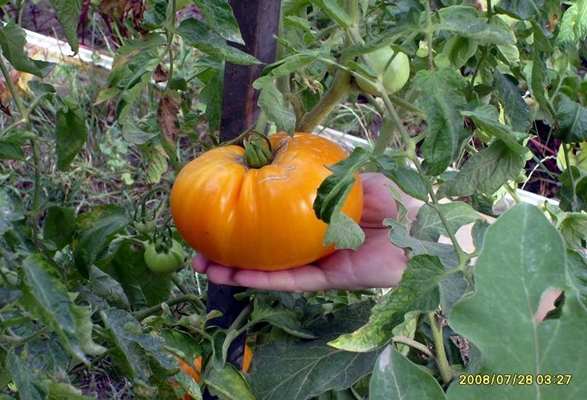
In summer, you need to monitor the humidity in the greenhouse. Its increase is especially critical during prolonged rains accompanied by a decrease in temperature. Reduce humidity by airing, but not create drafts.
Another measure that all experienced summer residents use is the removal of the lower leaves. By autumn, the leaves remain only in the upper part of the plant, there are enough of them to ripen the fruits. Plants with such care do not suffer from late blight. There is no stagnation of humid air, the plants are well lit, all nutrients are used for the formation of fruits.
Gardeners about the variety
Anna, Volgograd
In the spring I bought the Orange Giant. I liked the originally designed package of seeds from the Russian vegetable garden firm, the orange tomatoes in the picture attracted. I planted the seedlings according to the instructions, the description is given in full, looked after as expected. The seedlings grew frail, because the soil turned out to be bad. I fed tomatoes after transplanting into the ground. My giants have revived and blossomed. There were not many flowers, but all were large. The fruits were not orange, but light yellow and not very large. Apparently because of the weather. The taste pleased. The pulp is juicy, almost without seeds. For salads, Orange Giant tomatoes are ideal.
Growing tips
Before sowing, sort the seeds and soak for 10 minutes in a pale pink solution of potassium permanganate. Rinse the pickled seeds in running water and plant in the ground, covering each seed with a layer of 1.5 cm.
It is easier to buy ready-made soil. The day before planting, pour it into a plastic container and water. Plant the Orange Giant seeds the next day.
Reference. Seeds can be planted from mid-March to mid-April.
By closing the box with foil or glass, you can skip seedlings for a week. The soil in the box will be constantly moist. If the temperature in the room is 23 ° and higher, the seedlings will hatch on day 7.
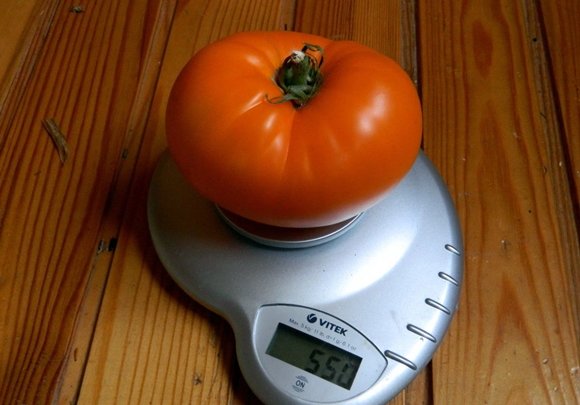
Transfer to the ridge
At the end of April or the first ten days of May, a crucial moment comes - transplanting young tomatoes into a greenhouse. The beds should be prepared in advance. In a standard greenhouse of 3 m wide polycarbonate, make 3 beds.
Make the central ridge wider - 80 cm, two side beds of 60 cm each and 2 passes of 50 cm each. This layout of the greenhouse guarantees comfortable conditions for tomatoes and the summer resident himself. It is easier to care for tomato bushes in a well-organized space.
How to plant seedlings
If the seedlings were dived into separate cups, the transfer method is used. The day before, the plants are watered. When transplanting, a lump of earth easily lags behind the walls of the cup, the roots are not damaged.
The plant moves to a new place with almost no stress. It is still necessary to water it with not cold water and the transplant is completed. Place no more than 3 roots of a large-fruited Orange Giant tomato per 1 m².
Summer care
Pinching stepchildren, forming a bush into one stem are mandatory measures for obtaining the fruits of giants. They need to be carried out throughout the season, but the stepsons grow more actively in the first half of summer.
Watering in the greenhouse cannot be canceled. If there is natural watering in the open ground - rain, then in the greenhouse moisture comes to the plants only thanks to the efforts of a hardworking summer resident.
Vegetable growers who save their time are switching to drip irrigation of greenhouses.This saves not only energy and time, but also water. A drop combined with mulch is the best disease prevention.
All reviews of gardeners say that you cannot grow giant fruits without fertilizers. And other varieties, such as the Orange Giant, need additional nutrients.

Conclusion
A few bushes of a large-fruited orange variety will not hurt. Sunny tomatoes are very sweet and fragrant and will add color and flavor to the summer menu. A photo of large tomatoes is a business card of a vegetable grower, a reason for pride and a well-deserved like on the social network.
